BAD BOYS II (2003)
Two loose-cannon narcotics cops investigate the flow of Ecstasy into Florida from a Cuban drug cartel.
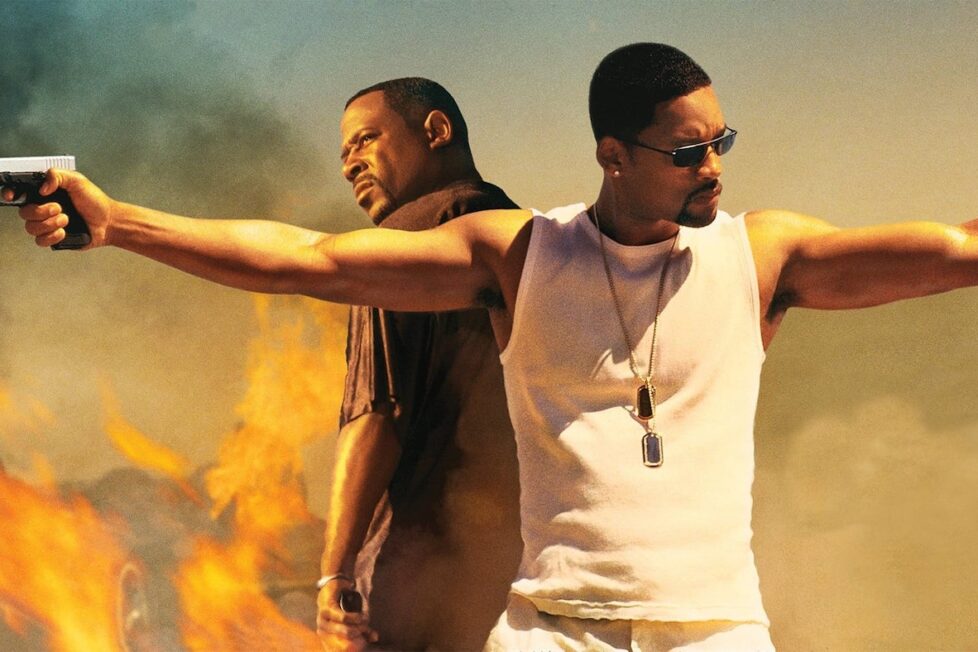
Two loose-cannon narcotics cops investigate the flow of Ecstasy into Florida from a Cuban drug cartel.


In 2003, the name ‘Michael Bay’ had become a punchline. The high-octane director’s Pearl Harbour (2001) was a derided World War II epic that inspired an insulting song in Team America: World Police (2004). The term ‘Bayhem’ had been coined to describe the orgiastic violence of his filmmaking, so supplanting that ethos into a real-life tragedy was seen as cheap and outright disrespectful. Bay was widely accepted as a dumb director of dumb films, incapable of making the jump from frivolous blockbusters to serious filmmaking the way Steven Spielberg had managed.
Bay’s response was fascinating. Instead of pushing further into attempted respectability, his next film would be the one that laid all his cards on the table: an all-out actioner built on excess and violence. Bad Boys II was that film, a work that seemed to grab critics by the collar and proclaim “you ain’t seen nothing yet!” Was Bay responding directly to critics by ramping up every element of his filmmaking that earned criticism? It’s possible, though Bay feels less of a reactionary and more of an indulger of his own whims. Pearl Harbour‘s critical failure gave him a free pass to wallow in the muck that made him so appealing to his fans. If the high-brow crowd wouldn’t accept him, to hell with them. He didn’t need respectability, he had Bayhem.
Never had his taste for violence been quite so aggressively captured, and it never would reach such heights again. Bad Boys II was a film that didn’t need a predecessor or a sequel. It was a fiery blast of a shotgun that existed on its own brutal plain, indulging Bay’s sweet tooth for gore like never before.
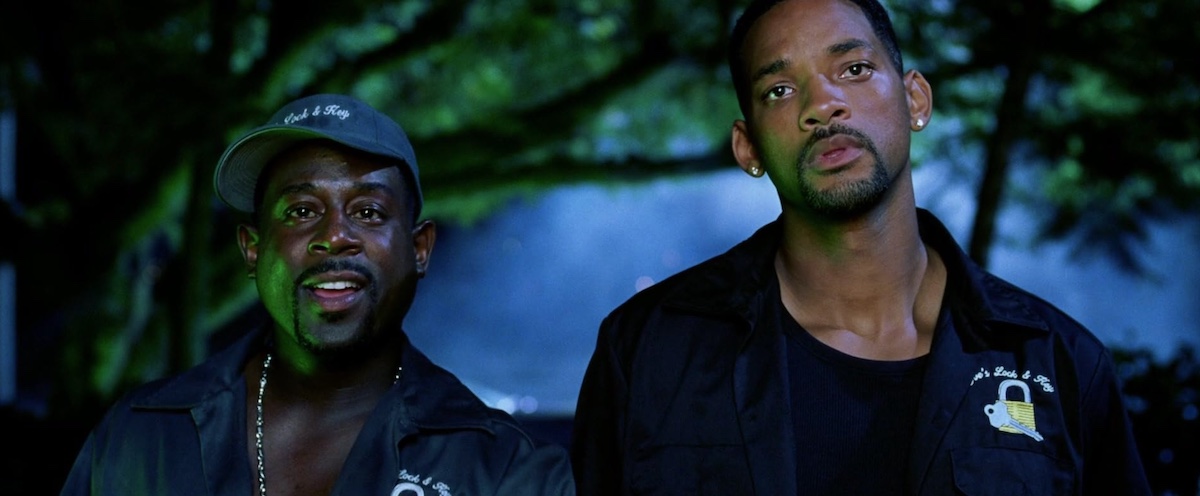
The film’s first set piece is a statement of intent. Down in the Florida Swamps, which bears the artificiality of a theme park stunt show, members of the KKK are in a standoff with our two hero cops, Mike Lowrey (Will Smith) and Marcus Burnett (Martin Lawrence). The two men burst out of their white robe disguises in ostentatious slow motion, guns at the ready. It doesn’t take long for the standoff to devolve into a shootout. The bullets fly, Bay making sure we see every spray of blood that flies into the humid night air.
He cements Mike and Marcus as our untouchable good guys here, contrasted against the vile white supremacists they take down. It would be easy to read these bad guys—indeed, every bad guy in the film—as stand-ins for Bay’s critics, so gleefully does Bay dismember them. “Blue Power, motherfucker” shouts Marcus at one of the racists, bringing to the fore that Bay isn’t actually terribly concerned with racism. Instead, he believes in whoever wields the biggest weapon and whoever can get the job done. He doesn’t want his audience to feel guilty for clapping at the carnage, so who better to commit above-the-law violence than bigots? It’s undoubtedly thrilling, offering a hint of blaxploitation revenge but without that genre’s grit or commentary.
In its place is an expensive slickness, every frame boosted with the cinematic excess that became Bay’s trademark. Harsh artificial lighting gives proceedings a sickly unrealism and high saturation, capturing an atmosphere as thick and expressive. His digital compositions allow his camera to follow a bullet in slow motion as it leaves the chamber and travels through the neck of a bad guy. He works these VFX elements into sophisticated practical stunt work, the result being something fanciful but somehow still visceral. There are even exploding barrels, of course.
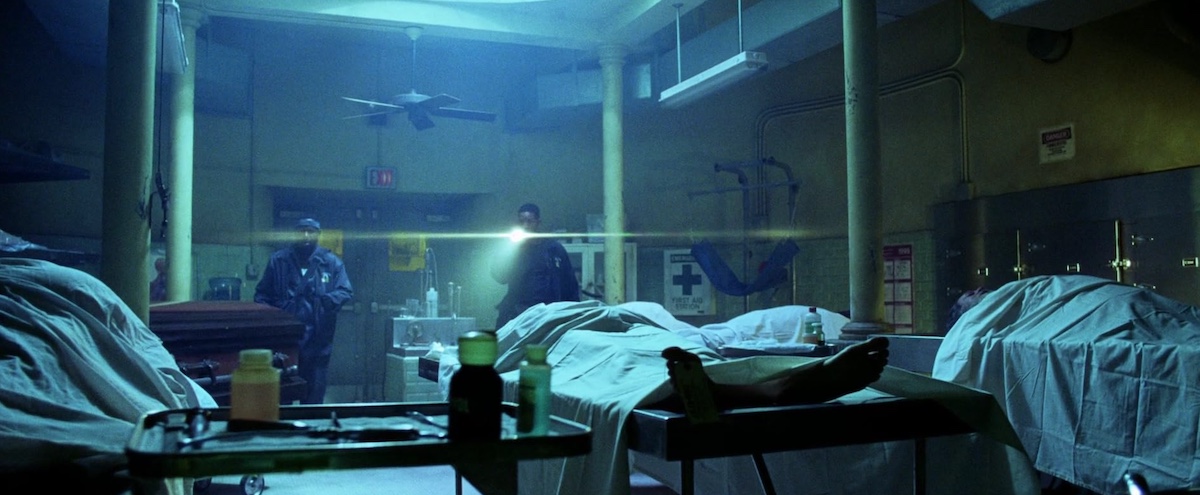
It wouldn’t be a Michael Bay action sequence without his unapologetically juvenile humour, which in this instance sees Marcus shot in the arse by a stray bullet of Mike’s. This recurring arse-shooting joke will rear its head multiple times throughout the film, so if you didn’t find it funny the first time, you certainly won’t the twentieth. But Bay finds teenage glee in puerile humour. Just look at his more recent Ambulance (2022), a film which insisted there’s little funnier than a large, farting dog. Or Transformers: Revenge of the Fallen (2009), which imagined a world in which a Transformer has large dangling testicles.
Humour is, of course subjective, and nobody’s more so than Bay’s. Thankfully, Smith and particularly Lawrence are gifted enough performers and share enough chemistry that they make the most of their inelegant banter, even as Bay pushes it to the absolute limit of tolerability.
If this entire first set piece feels slightly anticlimactic, then it’s setting a trend for what is to come. The titular Bad Boys are tracking down the source of large quantities of ecstasy which have entered the country from South America, via drug Kingpin Hector (Jordi Molla). Problematically, the film can’t find many reasons to keep postponing their eventual showdown with the drug lord, other than throwing mountains of debris in the boy’s way. There are car chases and shootouts galore, but there doesn’t seem to be much rhyme or reason to them; they happen when the audience is getting restless, so little is actually gleaned from them.
Part of the issue is that Bay seems genuinely disinterested in what anything he presents means. There are plenty of jokes thrown in about police brutality, with one glaring line revealing that Mike was in therapy for shooting ‘all those people at the airport’. A shoot-out in a Haitian ghetto feels particularly ugly, with the brains of immigrants sprayed over the walls and not a hint of self-awareness present.
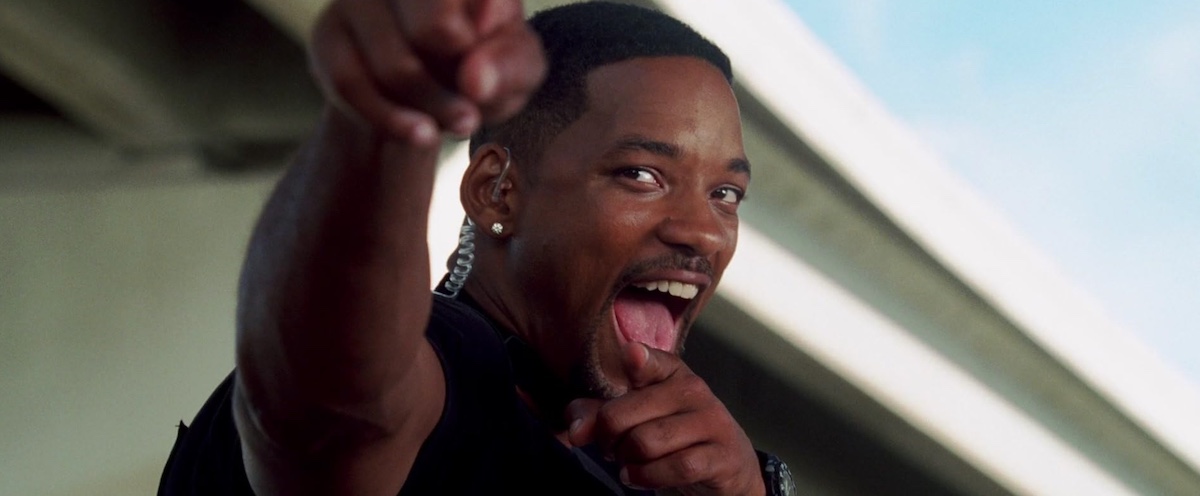
But the question it brings up is more interesting than Bay perhaps intended: can we enjoy such aggressive displays of aggression without guilt? The answer is: kind of. Surely any adult audience member blessed with critical thinking can recognise Bad Boys II as both grotesque and grotesquely entertaining. We can be both repelled by its content and drawn in by Bay’s form.
Two of the car chase scenes mirror each other in revealing ways. In the first, Mike and Marcus chase a hijacked truck, which begins spitting out its cargo—which happens to be cars—at them on the freeway. Dozens of faceless civilian drivers are wiped out in the chaos, but Mike dodges each four-wheeled projectile. Bay’s editing is frenetic and his camerawork hyperactive, but it’s coherent and has a distinct rhythm. When Mike throws the handbrake and spins the car so he can shoot at the bad guys through his window, there’s a hint of the maximalism found in Hong Kong action cinema, but transplanted to something wholly American.
In the second car chase, the boys are now chasing a van loaded with a different kind of cargo: hollowed-out human bodies filled with drugs. As the van careens around corners, the doors fly open and the corpses are jettisoned. Some roll right under the wheels of the car, while one is caught on their windshield. Another’s head goes rolling off down the street like a watermelon. Bay’s camera captures each body with delight, as if nudging audiences to ask if we can even believe he went there. The two chase scenes mirror each other in tone and in content, and it’s remarkable just how comfortable Bay is with using corpses for gags. In Bad Boys II, a human body has less value than a car. The audacity is impressive.
The corpse gags go one step further when Mike and Marcus find themselves inside a morgue, where they must dig through bodies to find stashes of drugs. Outside is thunder and lightning, inside it’s all Burke and Hare. The focus on dead bodies is downright morbid—as if Bay is actively trying to repulse audiences. But to what end? Is shock value all Bay has? The top of one corpse’s head rolls off revealing its brain, while in a truly baffling sequence, Marcus has to hide on a trolley with a well-endowed corpse referred to as ‘the bimbo’. Bay makes sure we get a close-up of the cadaver’s breasts in one of the more bizarre moments we’re ever likely to get in a summer blockbuster.
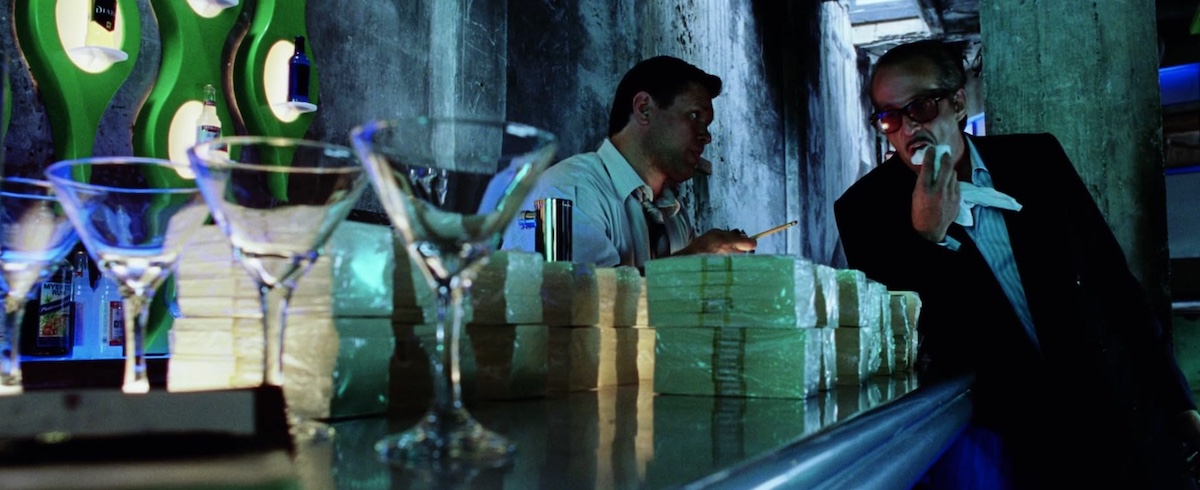
And it’s here the film begins to feel like an inescapable horror film, where nothing means anything and we’re being held hostage by someone just trying to shock us. Bad Boys II often feels as if it doesn’t recognise boundaries, and seems out of touch with what most people want to actually see. It’s as if it was helmed by a maniac living out their ugliest fantasies. Whether that makes it a work of twisted genius or total failure is down to personal taste.
There are certainly no boundaries in the film’s last hour, which sees the boys and their gung-ho black ops team saying to hell with jurisdiction and invading Cuba to track down Hector. “I do not want these animals taking over my city”, Mike has already proclaimed, making sure we feel no sympathy whatsoever for whoever might get in their way. And when they have to escape to a naval base, Marcus claims they can definitely do it because “we’re American.”
As they crash through Cuban slums in that most American of vehicles—the Hummer—it feels as if Bay not only doesn’t care but is being explicitly violent to prove he can be. There’s no human element in any of the action sequences. There’s never a moment where a civilian is rescued or a life preserved. It’s all fireworks and flag waving, with our unassailable and unquestionable heroes doing what they have to do to take down the bad guys. Anyone crushed under their boot is just collateral damage.
In this light, Bad Boys II feels like the ultimate post-9/11 movie, whether it’s meant to be or not. There’s such explicit anger and hatred in the film, and carte blanche to go wherever and do whatever by any means necessary. America was wounded, furious and hate-filled, the War on Terror an expression of its prejudice and hoo-ra jingoism. Bad Boys II is all of those things condensed into a brainless exercise of destruction. Perhaps it felt cathartic to audiences in 2003, or perhaps it functioned as pure escapism from a world in which death from above felt like a real possibility.
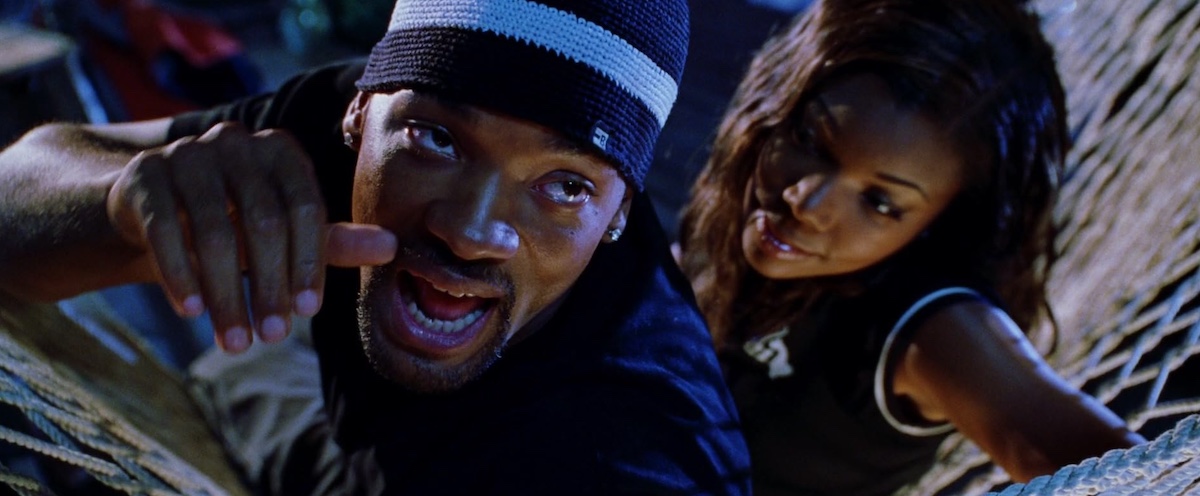
There are hints here and there of a post-9/11 world. Henry Rollins pops up as a Navy Seal, claiming things have gone ‘high tech’ since the attacks. The Patriot Act is glanced at cursorily as the boys and their team hack into Hector’s surveillance system. But these things are only used as plot devices and are merely part of the background noise. In Bay’s hands, they’re just a means to an end and not something to be overly concerned with. That goes for virtually every device in the film, whether it’s police violence or outright invasion.
If that sounds hollow, that’s because Bad Boys II is exactly that. It’s soulless. There are so many attempts at levity, including an agonisingly prolonged scene in which Marcus accidentally ingests ecstasy tablets and Mike must keep him sober in front of their Captain (Joe Pantoliano). That this comes just after we’ve spent half an hour amongst corpses is a fatiguing addition to an already overlong film.
Worse still is the film’s wonky attempts at drama, which mostly involve Marcus getting understandably exhausted by Mike’s antics, as well as the kidnapping of Marcus’ sister Sydney (Gabrielle Union). When Marcus deadpans “shit just got real”, it has all the gravity of a helium balloon. Bay has repeatedly removed all stakes and unsuccessfully decides to reinstate them when he decides. As a result, there’s no humanity in the film and no sense of tension or risk. As with the shot Bay offers us of two rats having sex, nothing means anything.
Critics didn’t find much meaning in it either. Richard Roeper named it the worst film of the year, while Roger Ebert wondered “what were they thinking?” The words ‘unpleasant’ and ‘offensive’ filled reviews, which doubtlessly gave Bay a dopamine hit or two. To even label Bad Boys II those things feels redundant and in some instances, like pearl-clutching. It’s like describing a metal band as ‘noisy’.
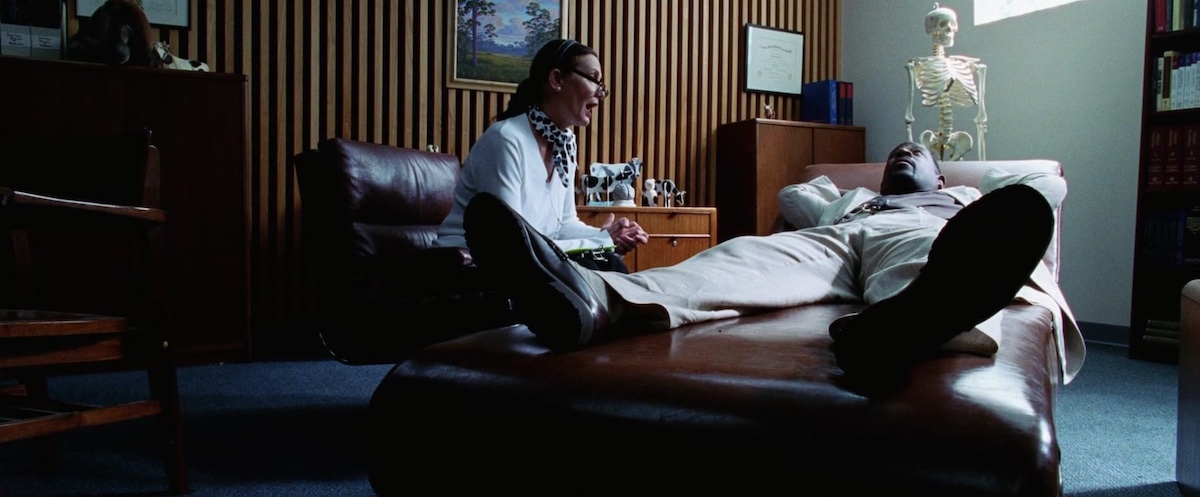
Another critical failure for Bay surely meant little at this stage, particularly when audiences lapped it up. It earned double its money back at the US box office and spawned a superior sequel called Bad Boys for Life (2020), which Bay didn’t return to direct.
Though time has largely been unkind to much of his work, something of a reappraisal of Bay’s filmography has been undertaken in previous years, culminating with Ambulance making plenty of action aficionado’s best-of lists in 2022. And surely Bad Boys II is remembered fondly, at least, for its biggest fan: the character of Danny Butterman (Nick Frost) in Hot Fuzz (2007), who was flabbergasted to learn his partner ‘ain’t seen Bad Boys II?!”
20 years later, Bad Boys II is best viewed as a fascinating time capsule of a deeply ugly period in US history. Bay may not have been attempting to capture the mood of a country, but he did so in a typically backhanded fashion nonetheless. It’s the filmic version of the Hummer; gigantic, destructive, ugly, and now something of a relic. But for those sitting in the front seat, it was probably a guilty thrill while it lasted. For anyone outside the plushy interior, it may just have been a horror show.
Bad Boys II is also perhaps the quintessential Michael Bay film; breathless action, dire humour, and a total disrespect for human life. If it was a reaction to his naysayers then we can be thankful he went full-throttle, giving us a film that showed a nation’s true colours—for better or worse. He would go on to make better films (Ambulance) and worse films (Transformers: Revenge of the Fallen) but never had he been so unrestricted and gleefully irresponsible. Of course, it’s never a director’s job to be responsible. It’s their job to follow their own dharma. In that respect, Bad Boys II is the purest expression of one of our most deeply questionable visionaries.
USA | 2023 | 147 MINUTES | 2.39:1 | COLOUR | ENGLISH • SPANISH • RUSSIAN

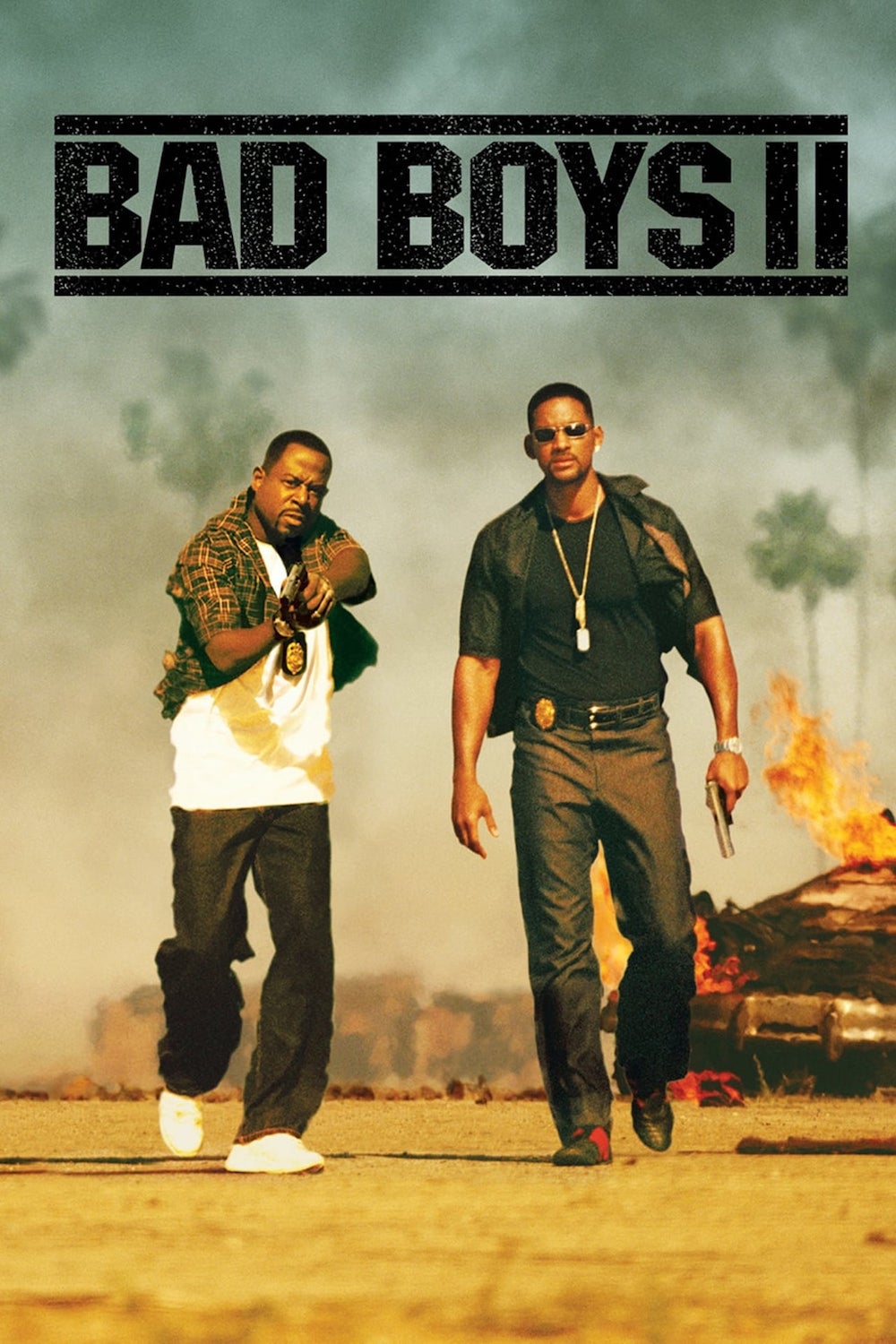
director: Michael Bay.
writers: Ron Shelton & Jerry Stahl (story by Ron Shelton, Cormac Wibberley & Marianne Wibberley; based on characters created by George Gallo).
starring: Will Smith, Martin Lawrence, Jordi Mollà, Gabrielle Union, Peter Stormare, Theresa Randie & Joe Pantoliono.
